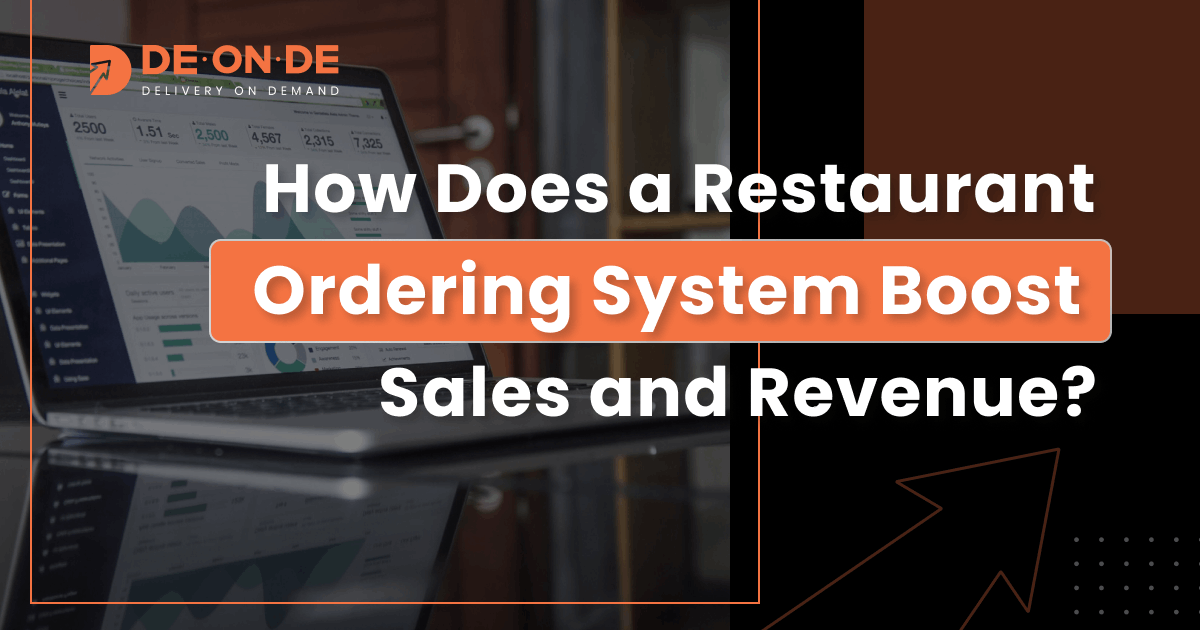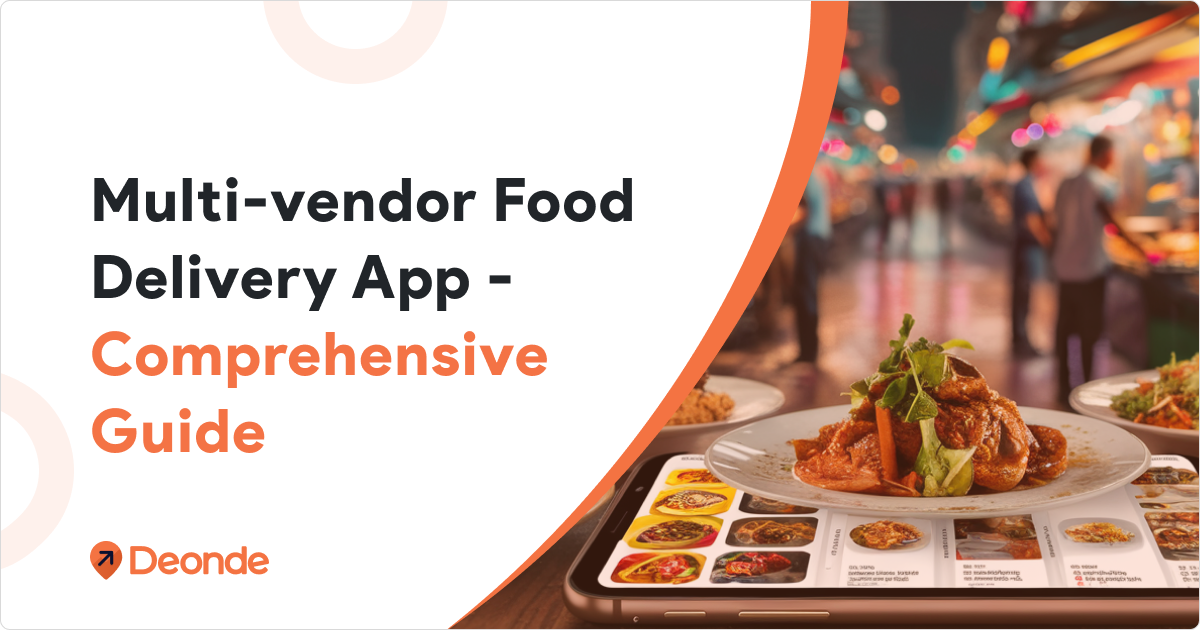Are you tired of long wait times, misplaced orders, and unhappy customers? As a restaurant owner or manager, these are just some of the challenges that can negatively impact your sales and revenue. But what if there was a solution to streamline the ordering process and enhance the overall customer experience? Enter the restaurant ordering system. In this blog post, we’ll explore How Does a Restaurant Ordering System Boost Sales and Revenue? while also improving customer satisfaction. Get ready to take your restaurant’s success to the next level!
According to Statista, the adoption of a restaurant ordering system has proven to be a highly effective strategy for boosting sales and revenue.
The data reveals impressive figures, with restaurants experiencing an average increase of up to 20% in sales after implementing an ordering system. Additionally, online orders processed through these systems have witnessed a remarkable surge, contributing to revenue growth of approximately 30%.
The convenience and accessibility offered by the ordering system have played a significant role in attracting new customers, as evidenced by a 25% expansion in the customer base. Moreover, integrating the system with delivery services has been shown to further drive revenue, with restaurants reporting an average revenue increase of 15% from delivery orders alone.
How Does a Restaurant Ordering System Boost Sales and Revenue?
Streamlined Ordering Process:
Traditional methods of taking orders, such as phone calls or in-person interactions, can be prone to errors and delays. A restaurant ordering system simplifies the process by providing an intuitive platform for customers to place their orders directly. This eliminates miscommunication and reduces the chance of errors, ensuring accurate and prompt order processing. By streamlining the ordering process, restaurants can serve more customers efficiently, leading to higher sales.
Increased Accessibility:
With an online ordering system, customers can conveniently place their orders from anywhere and at any time. This accessibility factor is crucial in today’s digital age, where customers value convenience and efficiency. By offering an online ordering option, restaurants can attract a broader customer base and cater to those who prefer the ease of ordering from their mobile devices or computers. The increased accessibility results in a wider reach and, subsequently, higher sales potential.
Upselling and Cross-Selling Opportunities:
An automated ordering system can effectively showcase menu items, promotions, and add-ons to customers during the ordering process. By utilizing suggestive selling techniques, such as recommending popular dishes or suggesting additional sides or beverages, restaurants can encourage customers to spend more. Upselling and cross-selling not only increase the average order value but also enhance the overall dining experience for customers by introducing them to new and exciting options.
Personalized Ordering Experience:
A robust restaurant ordering system allows for customization and personalization, giving customers the freedom to tailor their orders according to their preferences. From dietary restrictions to ingredient substitutions, customers can specify their requirements easily. This personalized approach enhances customer satisfaction and builds loyalty. Satisfied customers are more likely to become repeat customers, leading to increased sales and revenue in the long run.
Integration with Loyalty Programs:
Many restaurant ordering systems offer seamless integration with loyalty programs or rewards systems. This integration enables restaurants to track customer preferences, order history, and spending patterns. By analyzing this data, restaurants can personalize marketing campaigns, offer targeted promotions, and provide exclusive discounts to loyal customers. Loyalty programs create a sense of appreciation among customers, encouraging them to choose the restaurant over competitors, ultimately boosting sales and revenue.
Efficient Order Management:
A restaurant ordering system streamlines the order management process, allowing restaurants to handle a high volume of orders efficiently. Orders are automatically transmitted to the kitchen, reducing the reliance on manual processes and minimizing errors. Additionally, features like real-time order tracking and automated notifications keep customers informed about their order status, improving transparency and customer satisfaction. The ability to handle more orders and provide timely updates leads to faster turnaround times, which in turn generates more revenue.
Data-Driven Decision-Making:
One of the significant advantages of a restaurant ordering system is the wealth of data it generates. From order trends and popular items to customer feedback and reviews, the system collects valuable information that can drive data-driven decision-making. By analyzing this data, restaurant owners and managers can identify areas for improvement, optimize the menu, adjust pricing strategies, and target marketing efforts effectively. Data-driven decision-making enables restaurants to make informed choices that directly impact sales and revenue.

How to Implement a Restaurant Ordering System
- Implementing a restaurant ordering system: requires careful planning and execution. Set Clear Objectives: Define your goals and objectives for implementing a restaurant ordering system. Identify the specific benefits you aim to achieve, such as increased sales, improved customer experience, and streamlined operations.
- Research and Choose a Suitable System: Conduct thorough research on different restaurant ordering system options available in the market. Consider factors such as features, pricing, scalability, ease of use, integration capabilities, and customer support. Choose a system that aligns with your restaurant’s specific needs and budget.
- Assess Infrastructure and Technical Requirements: Evaluate your existing infrastructure, such as POS systems, hardware, and internet connectivity. Ensure that your infrastructure can support the chosen ordering system. Determine any additional technical requirements, such as hardware upgrades or software installations, and make necessary preparations.
- Customize Menu and Pricing: Set up your menu and pricing within the ordering system. Ensure that all menu items, descriptions, options, and prices are accurately reflected. Customize the system to accommodate any specific requirements, such as dietary preferences, customization options, and special instructions.
- Configure Order Management Processes: Define the workflow for managing orders through the system. Determine how orders will be received, processed, and fulfilled. Set up processes for handling modifications, cancellations, and refunds. Train your staff on how to use the system effectively for smooth order management.
- Integrate with Existing Systems: If you have existing systems like POS, inventory management, or loyalty programs, consider integrating the new ordering system with these systems. The integration enables seamless data transfer and reduces manual work. Work with the ordering system provider or a technology consultant to ensure successful integration.
- Train Staff: Conduct thorough training sessions for your staff to familiarize them with the ordering system. Train them on how to process orders, handle customer inquiries, and troubleshoot any system-related issues.
- Test and Refine: Before launching the ordering system to customers, conduct extensive testing to ensure that all features and functionalities are working correctly. Test different scenarios, such as placing orders, making modifications, and processing payments. Gather feedback from staff and make necessary refinements to improve the system’s performance.
- Launch and Promote: Once you are confident in the system’s functionality, officially launch your restaurant ordering system. Promote it through various channels, including your website, social media platforms, email newsletters, and physical signage. Highlight the benefits and convenience of ordering online to encourage customers to use the system.
- Monitor and Optimize: Continuously monitor the performance of your restaurant ordering system. Track key metrics such as order volume, average order value, customer feedback, and operational efficiency. Use this data to identify areas for improvement and optimize the system over time.
Remember, effective implementation of a restaurant ordering system requires ongoing maintenance, updates, and adaptation to meet evolving customer needs. Stay responsive to customer feedback and market trends to ensure the long-term success of your online ordering system.

Strategies for Boosting Orders by Promoting Your Online Ordering System
- Promoting Online Ordering System: Promoting your Online Ordering System is crucial to drive awareness and encourage customers to utilize this convenient service. Optimize your website and mobile app: Ensure that your website and mobile app are user-friendly, visually appealing, and optimized for seamless online ordering. Make it easy for customers to navigate through your menu, customize their orders, and complete the checkout process.
- Highlight the benefits: Communicate the advantages of your online ordering system to customers. Highlight benefits such as convenience, time savings, order accuracy, customization options, and exclusive online-only promotions. Emphasize how online ordering enhances the overall customer experience.
- Prominent placement: Place visible and easily accessible links or buttons on your website, social media profiles, and email newsletters to direct customers to your online ordering platform. Make it a prominent feature on your homepage, and consider using pop-ups or banners to grab attention and promote the system.
- Engaging social media presence: Leverage social media platforms to promote your online ordering system. Post engaging content, such as high-quality food images, enticing offers, and customer testimonials. Encourage followers to place orders through your online platform by including direct links or call-to-action buttons in your posts.
- Exclusive online offers and incentives: Create special promotions and discounts exclusively for online orders to incentivize customers to use your online ordering system. Offer limited-time deals, freebies, or discounts for first-time online orders or for reaching a certain order value.
- Collaborate with delivery partners: If you offer delivery services, collaborate with popular third-party delivery platforms and integrate your online ordering system with their platforms. This expands your reach and allows customers to find and order from your restaurant through multiple channels.
- Email marketing campaigns: Utilize email marketing to inform your customer base about your online ordering system. Send out regular newsletters with enticing visuals, menu highlights, and exclusive online order promotions. Segment your email list based on customer preferences and order history to send personalized offers that resonate with specific groups.
ALSO READ: Why Do You Need an Online Ordering System?
- Partner with influencers and food bloggers: Collaborate with influencers and local food bloggers who have a significant online following. Invite them to try your online ordering system and showcase their experience through blog posts, social media posts, or video content. Their endorsement can drive awareness and generate interest among their followers.
- Collect and showcase customer testimonials: Encourage satisfied customers to leave reviews and testimonials about their online ordering experience. Display these testimonials on your website, social media platforms, and promotional materials to build trust and confidence in your online ordering system.
- Monitor and respond to feedback: Regularly monitor customer feedback and reviews regarding your online ordering system. Address any issues promptly and proactively. Show that you value customer input and are committed to providing a seamless online ordering experience.
Ways to Increase Restaurant Business Sales
- Enhance the Dining Experience: Focus on delivering exceptional customer service, ensuring a comfortable ambiance, and providing high-quality food. Offer unique and innovative dishes to create a memorable dining experience.
- Implement Online Ordering: Embrace technology and offer online ordering options for customers. This provides convenience and expands your reach to a wider customer base.
- Offer Delivery and Takeout Services: In addition to dine-in options, provide delivery and takeout services. Partner with third-party delivery platforms or establish your delivery system to reach customers who prefer to enjoy your food at home.
- Upsell and Cross-Sell: Train your staff to effectively upsell and cross-sell menu items, beverages, or desserts. Encourage them to recommend popular or complementary dishes to increase the average order value.
- Loyalty Programs and Special Offers: Implement a loyalty program to reward repeat customers and encourage customer retention. Offer special discounts, promotions, or exclusive deals to incentivize customer loyalty and increase sales.
- Collaborate with Local Businesses: Establish partnerships with local businesses, such as hotels, event venues, or offices, to cater their events or offer special discounts to their customers. This expands your customer base and generates additional revenue streams.
- Social Media Marketing: Utilize social media platforms to showcase your restaurant, promote your menu, and engage with customers. Post enticing food photos, share customer testimonials, and run targeted ads to attract new customers and build brand awareness.
- Online Reviews and Reputation Management: Encourage satisfied customers to leave positive reviews on popular review sites and respond to both positive and negative feedback promptly. A strong online reputation attracts more customers and builds trust.
- Host Special Events or Theme Nights: Organize special events, themed nights, or promotional evenings to attract customers. This can include live music performances, guest chef collaborations, or holiday-themed events. Promote these events through social media and local marketing channels.
Conclusion
In summary, a restaurant ordering system can be an invaluable asset for businesses looking to boost sales and revenue. From increasing customer loyalty and providing an efficient way of managing orders to streamlining operations and reducing costs, the benefits are clear. If you want to get ahead of the competition or just ensure that your business stays up-to-date with modern technology, investing in a restaurant ordering system is definitely something worth considering.




